5 Indoor Flowering Plants to Brighten Up Your Tokyo Winter
These Easy Houseplants Will Keep Your Home Blossoming All Winter Long
Turn your Tokyo home into a winter haven with indoor blooms! We’ve come up with a list of five flowering plants to adorn your Tokyo interiors and some tips to help them be their best selves.
While Japan has many lovely winter flowers to view in the great outdoors, the inside of our apartments can get drab and chilly from December to March. Yet, as the weather gets colder, we tend to retreat inside and spend more of our free time indoors huddled under blankets, thick sweaters and fuzzy socks. In the fight to ward off the winter chill, why not add a few house plants ready to bloom beautifully to warm our hearts and minds? The indoor world feels even more inviting when you have flowers to offset the grayish skies.
African Violets
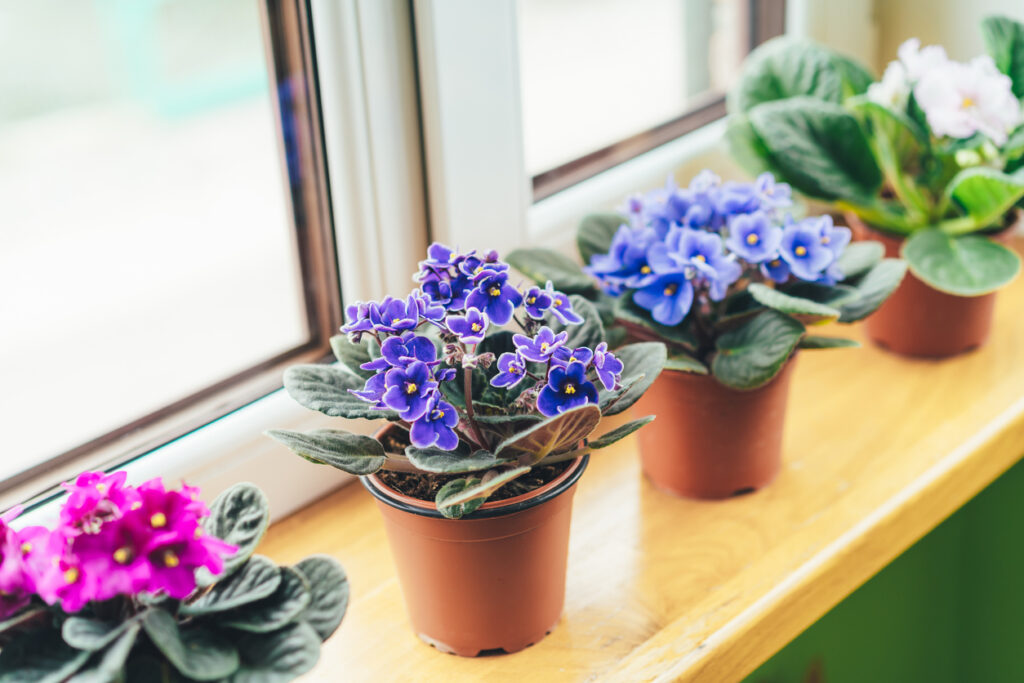 © Photo by iStock: Anna_Hirna
© Photo by iStock: Anna_HirnaDespite having a (somewhat unwarranted in my opinion!) difficult reputation, afurika sumire (African violets) are beloved flowering houseplants that will bloom all year round. African violets come in several varieties but are characterized by their petite size, vibrant coloring (with most in the purple, red, pink or white families), rosette-like flowers and fuzzy leaves. You can easily group a number of these flowers together to create a colorful arrangement that will brighten your home this winter.
These plants enjoy bright indirect sunlight, preferably near a window, and well-ventilated environments free of cold drafts. African violets also need a potting mix that is well-draining since they do poorly in either too dry or water-logged soils. Although these plants like humid environments, they don’t care for misting or getting their leaves wet as this causes browning spots to form. And for a constant supply of blooms, be sure to fertilize regularly and dead-head the flowers after the blooms are spent.
Indoor Roses
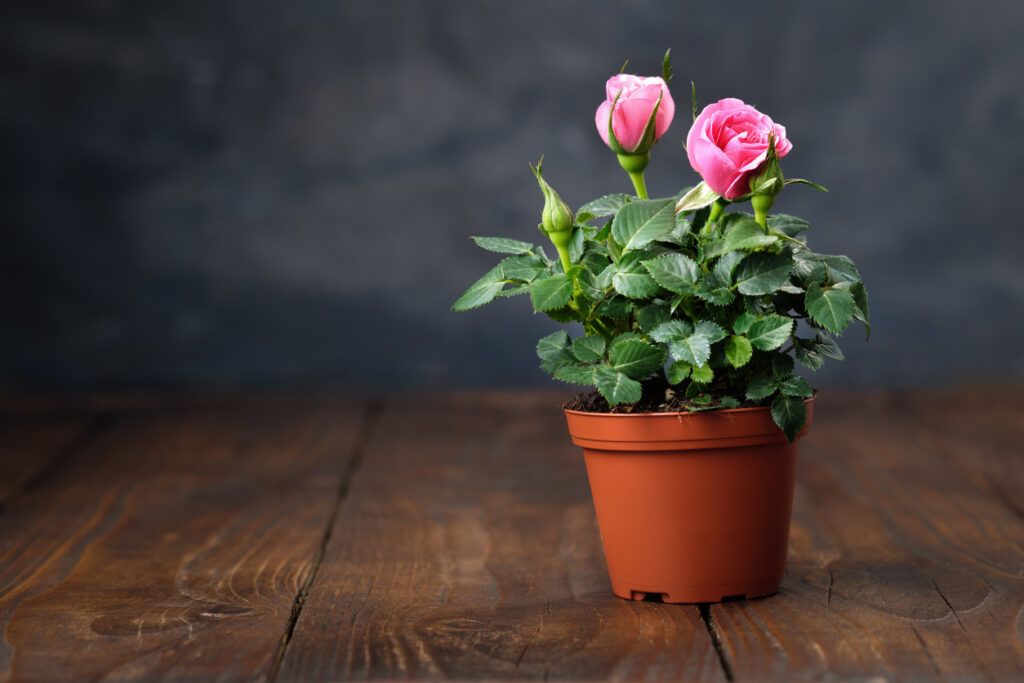 © Photo by iStock: ChamilleWhite
© Photo by iStock: ChamilleWhiteYou may be surprised to learn that bara (roses) can be grown indoors, but, given the right conditions, these uncommon house plants too can sit alongside your other flora. Miniature roses (ミニチュアローズ) are the best and will flower just as beautifully in your home as they would outside, provided you offer them the right environment. Miniature infinity roses (インフィニティローズ), for example, are a type of mini rose that are easy to find in Japan (even in supermarkets sometimes!) and bred for life inside.
Roses require ample sunlight—at least six hours of direct light near a southern or western exposed window—otherwise, they will not be able to thrive. Also, similar to other flowering houseplants, they require a warm and humid climate. Roses are prone to spider mites and are more susceptible if the air becomes too dry. As such, placing them on a bed of moist pebbles is one option to maintain their ideal humidity levels. These plants, like all of our flowering friends, will also likely need regular fertilizing to bloom indoors.
Begonias
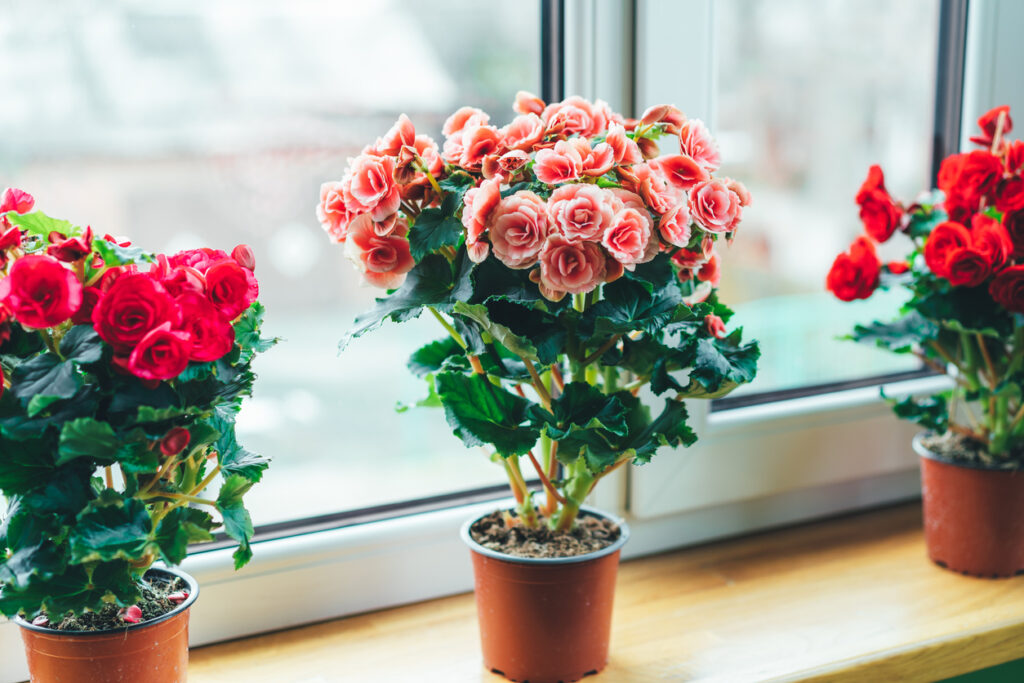 © Photo by iStock: Anna_Hirna
© Photo by iStock: Anna_HirnaBegonias (ベゴニア) are versatile plants that are known for their striking leaves and colorful rose-like flowers. There are several varieties of begonias, but wax begonias, named for their waxy leaves, are the most popular for being unfussy and sporting bright foliage. Begonias make for lovely gifts yet are rarely overpriced even at the florist. They would make an attractive addition to your houseplant collection.
Begonias are relatively easy to care for plants, but they are prone to root rot from overwatering. For this reason, it is recommended to let them completely dry out and even to show signs of drooping before watering them. Also, given that they are tropical plants, they need to be placed in warm and humid environments (usually not a problem for most of the year in Japan!). Begonias enjoy indirect sunlight and generally grow well indoors because they don’t need extensive hours of sunlight to produce a continuous supply of gorgeous blooms.
Anthuriums
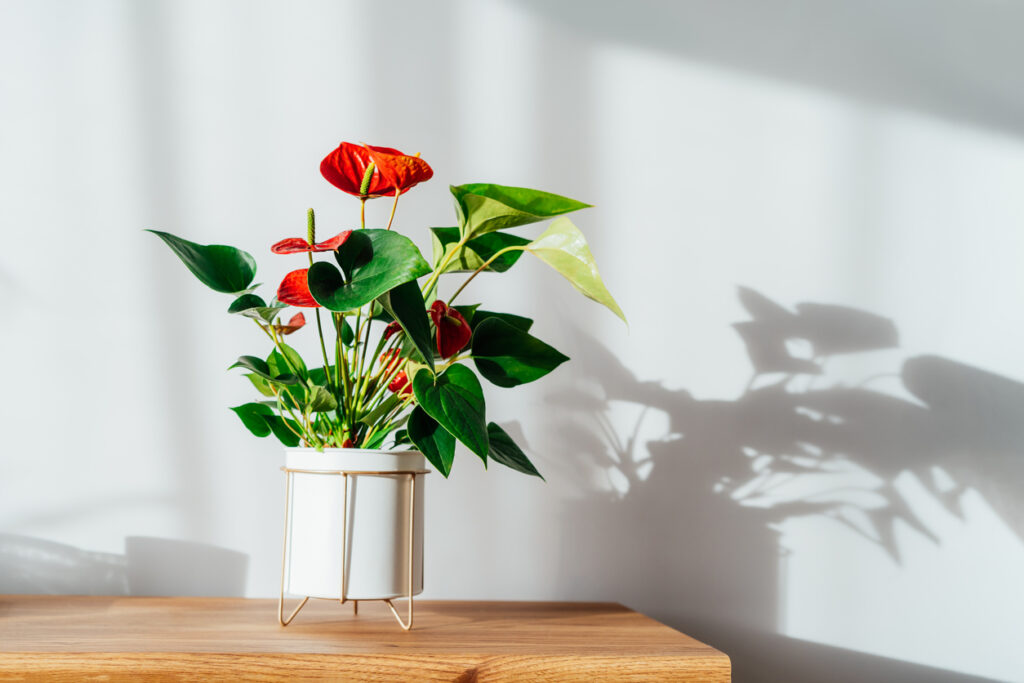 © Photo by iStock: OKrasyuk
© Photo by iStock: OKrasyukOriginating from the warm and humid rainforests of South America, anthuriums (アンスリウム) are loved for their dramatic flair and their low-maintenance nature. Their flowers or “spathes” look like large colored leaves that bloom in bold reds, pinks and whites. Also, due to their similarities to poinsettias, anthuriums have become increasingly popular as winter holiday decor. Not only will these flowers make for festive centerpieces, but they can be paired with other tropical plants, like orchids and begonias, to create a beautiful arrangement all year round.
Anthuriums will typically flower on and off throughout the year, with a typical flowering period lasting about eight weeks. Anthuriums may also take a few months to get used to their new environment, so don’t be alarmed if they don’t start blooming right away. These plants need direct sunlight, preferably near a window especially during the winter months, as well as high humidity.
Orchids
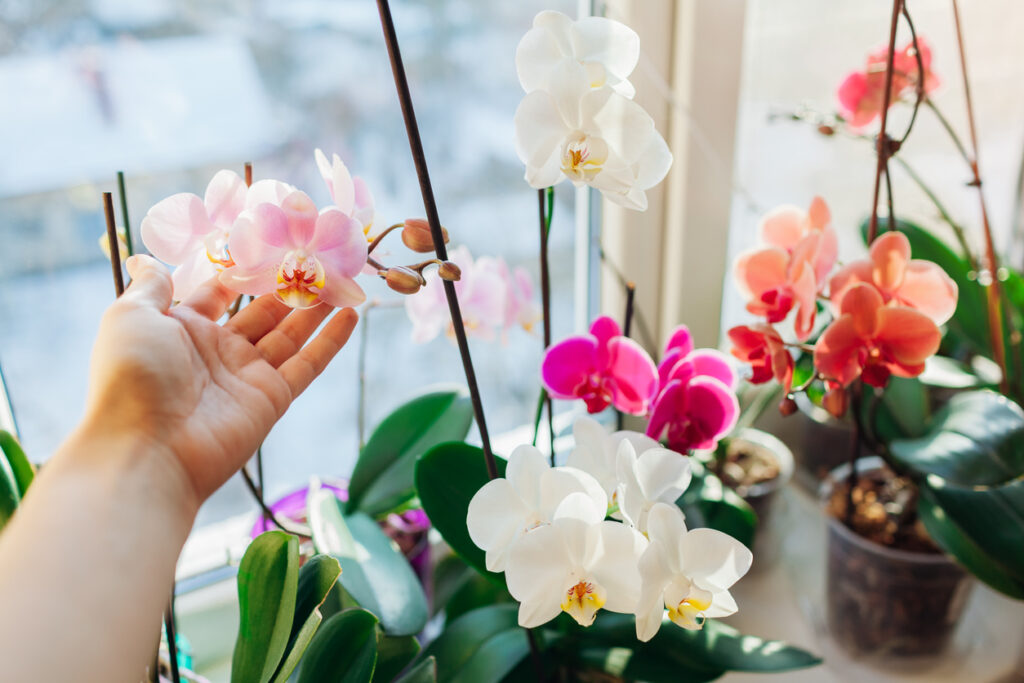 © Photo by iStock: Maryviolet
© Photo by iStock: MaryvioletAlthough ran (orchids) are known for being difficult indoor plants, they’re nevertheless a popular choice for their unique beauty and array of colorful blooms. The most common one is the gochooran (phalaenopsis orchid), also known as a moth orchid for its eponymously shaped flowers. Measuring about two to five centimeters in diameter, these flowers can come in whites, purples and yellows and are capable of flowering for four to six months of the year.
When keeping orchids, one fatal mistake is overwatering. While they certainly like quite a bit of water, root rot tends to settle in easily. As such, orchids should only be watered again when the soil is slightly dry. When choosing soil, one that is designed specifically for orchids works best, but a well-draining mix that doesn’t get too dry too quickly can also be effective. With east or west-facing windows providing direct sunlight, a room that’s between 40–60% relative humidity and a 10 degree differential between day and night time temperatures, you’re set for showy blooms at least once a year, and twice if you’re lucky.
With these five flowering flora, you’re well on your way to making your Japanese home warmer with splashes of colorful petals.
What plants do you like to keep indoors during the winter months? Let us know in the comments below!














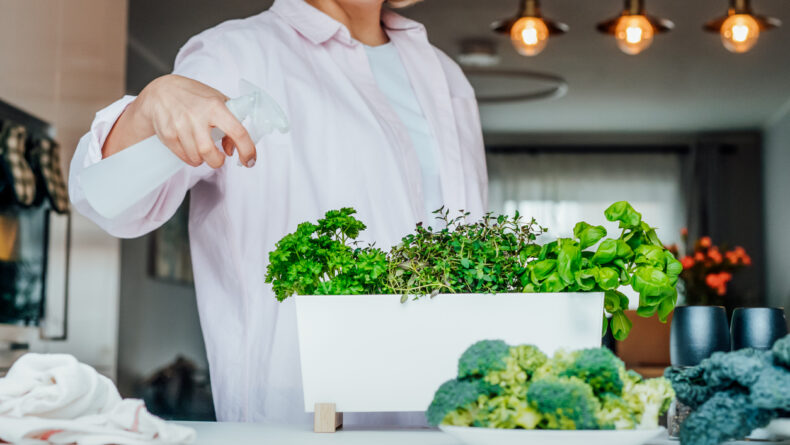

Leave a Reply